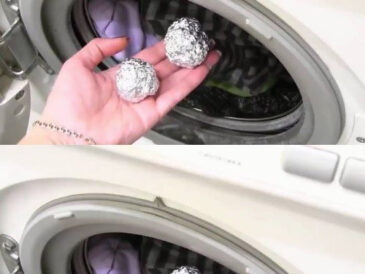Gardening is a rewarding hobby, but it comes with its fair share of challenges. One of the most frustrating issues that many gardeners face is dealing with moles. These little creatures may look harmless, but their underground tunnels can destroy plant roots, ruin lawns, and create unsightly mounds of soil. If you’ve been struggling with mole infestations, don’t worry—there’s an old trick that has been passed down through generations to repel moles effectively, and it requires almost no effort at all!
In this detailed guide, we’ll explore why moles invade gardens, how they affect your plants, and the simple trick to repel them in just four minutes. Plus, we’ll provide additional natural and humane solutions to keep your garden mole-free!
Understanding Moles in the Garden
Before diving into mole-repelling tricks, it’s important to understand why these burrowing creatures invade your garden in the first place.
Why Do Moles Dig in Gardens?
Moles are not after your plants—they are carnivores that feed on insects, grubs, and earthworms. They dig tunnels to hunt for food, which inadvertently damages the roots of your plants and creates unsightly hills of soil.
Signs of a Mole Infestation
- Raised ridges across your lawn from tunneling.
- Small volcano-like mounds of soil (molehills).
- Plants suddenly wilting due to root damage.
- Spongy soil where tunnels have collapsed.
How Are Moles Different from Voles?
While moles dig tunnels and feed on insects, voles are small rodents that chew on plant roots and stems. If you notice direct plant damage beyond tunnel disruptions, you might also have voles.
The 4-Minute Trick to Repel Moles Naturally
Many gardeners swear by this old-fashioned mole-repelling trick that requires minimal time and effort. Here’s how it works:
What You Need:
- Castor oil (2 tablespoons)
- Dish soap (1 tablespoon)
- Water (1 gallon)
- Spray bottle or garden sprayer
Instructions:
- Mix the Solution – In a large container, mix 2 tablespoons of castor oil with 1 tablespoon of dish soap. Add 1 gallon of water and stir well.
- Spray the Affected Areas – Pour the solution into a spray bottle or garden sprayer and apply it to mole tunnels and surrounding soil.
- Water the Lawn – Lightly water the treated areas to help the solution soak into the soil.
- Wait and Watch – Moles dislike the smell and taste of castor oil, making them relocate within days!
This method is safe for plants, pets, and children, making it an eco-friendly alternative to chemical repellents.
Additional Natural Ways to Repel Moles
If you’re looking for more ways to keep moles away, here are additional techniques that work well.
1. Plant Mole-Repellent Plants
Some plants naturally repel moles due to their strong scents. Consider planting:
- Marigolds – Their roots emit a natural chemical that moles dislike.
- Daffodils – These bright flowers are toxic to moles.
- Alliums (Onions & Garlic) – Their pungent smell deters underground pests.
2. Use Coffee Grounds
Sprinkling used coffee grounds in mole tunnels adds an unpleasant scent that drives them away. Plus, it’s a great natural fertilizer!
3. Introduce Natural Predators
Encouraging natural predators like owls, hawks, and snakes can help reduce mole populations. Installing an owl box in your yard may attract these helpful hunters.
4. Vibrations and Sound Deterrents
Moles have sensitive hearing and dislike disturbances. You can use:
- Pinwheels – Their vibrations deter moles when placed near tunnels.
- Ultrasonic Mole Repellents – Battery-powered stakes emit vibrations underground to scare them off.
5. Create an Underground Barrier
Burying wire mesh or hardware cloth around your garden at a depth of 12-18 inches can prevent moles from tunneling into your plant beds.
What NOT to Do: Common Mole Control Mistakes
Many gardeners make these mistakes when trying to get rid of moles. Avoid these to ensure long-term success.
1. Using Poison
Poisons may harm beneficial wildlife, pets, or even children who play in the garden. Stick to natural solutions instead!
2. Flooding Tunnels
Some people try to flood mole tunnels with a hose, but this is ineffective and can damage plant roots instead.
3. Ignoring Early Signs
Moles reproduce quickly, so acting early when you see molehills can prevent a full-blown infestation.
Frequently Asked Questions
Q1: Will castor oil harm my plants?
No! Castor oil is safe for plants and won’t disrupt soil fertility.
Q2: How long does it take for the castor oil solution to work?
Most gardeners notice reduced mole activity within 3-5 days.
Q3: Can I use this trick on vegetable gardens?
Yes! The solution is safe for flower beds, lawns, and vegetable gardens.
Q4: Do moles come back?
If your garden continues to attract moles with a high grub population, they may return. Applying the castor oil solution monthly can help keep them away.
Q5: What if I have voles too?
For voles, you can use additional repellents like peppermint oil or traps to protect plant roots.
Conclusion: Say Goodbye to Moles in Just Minutes!
Moles may be a common nuisance, but with this simple 4-minute castor oil trick, you can easily repel them without chemicals or expensive treatments. Plus, incorporating natural repellents like coffee grounds, predator-friendly environments, and vibration deterrents will further protect your garden from mole damage.
If you’ve been struggling with moles in your yard, give this method a try and enjoy a beautiful, mole-free garden! Your plants (and lawn) will thank you!




